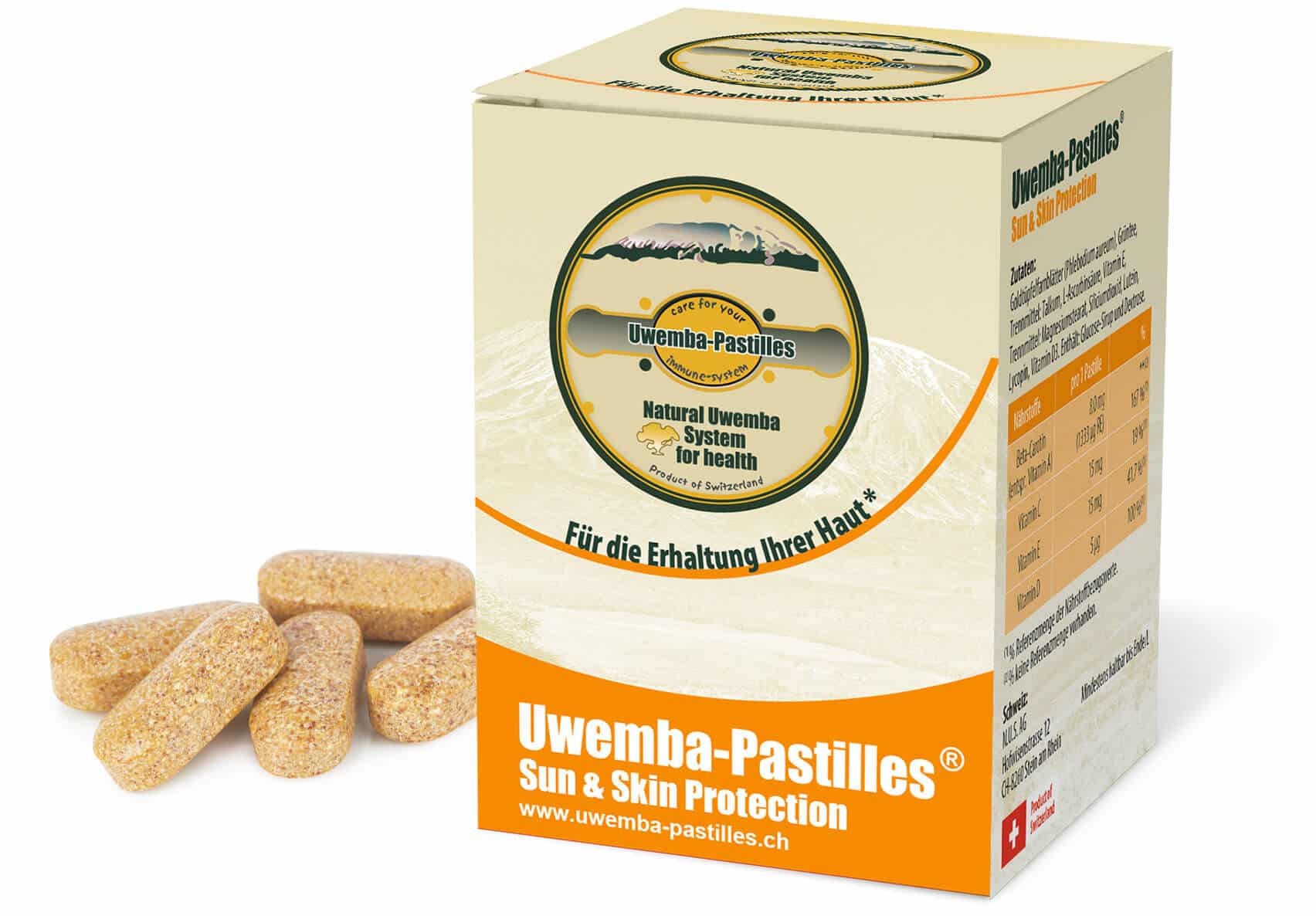
Uwemba-Pastilles® Sun & Skin Protection
For the maintenance of normal skin*
Food supplement made from 2 different plants and vitamins.
Composition
Uwemba-Pastilles® Sun & Skin Protection consist of:
- Golden polypody (Polypodium leucotomos)
- Green tea
- Vitamin C
- Vitamin E
- Beta-carotene
- Lutein
- Lycopene
- Vitamin D3
Dosage
Uwemba-Pastilles® Sun & Skin Protection are suitable for regular use (80 pastilles = 80 days) and/or as a daily dietary supplement. Take 1 pastille daily with some liquid. For use in adults and children over 12 years.
* Vitamin A contributes to the maintenance of normal skin.
* Vitamin C helps to protect the cells from oxidative stress.
* Vitamin D has a function in cell division.
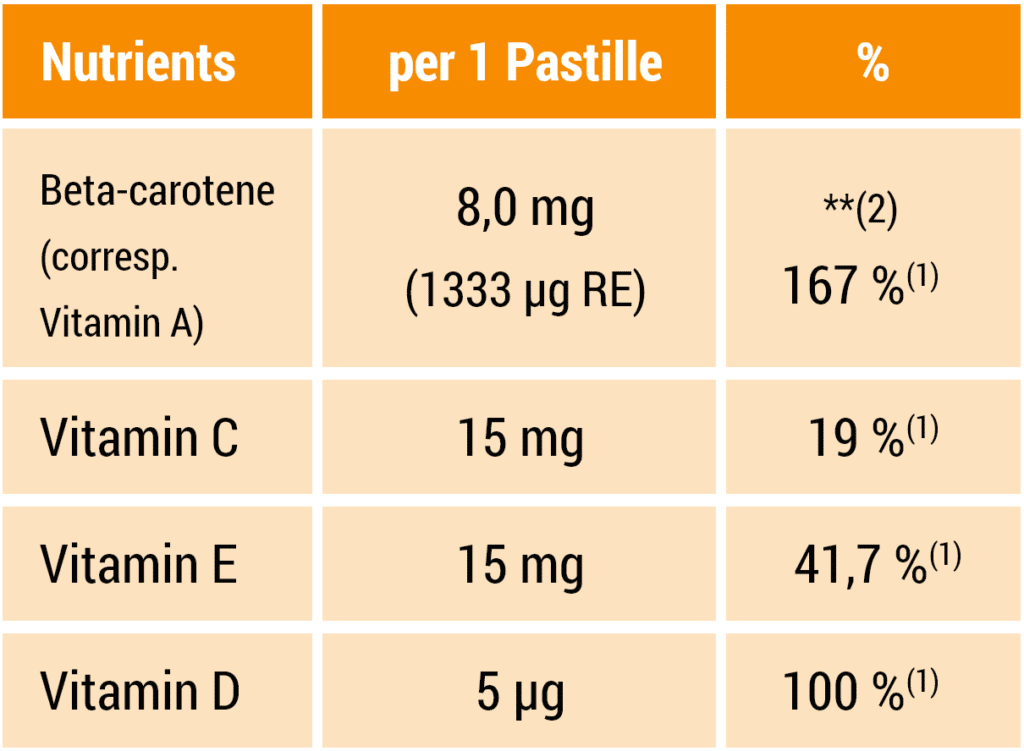
(1) % of the reference quantity for daily intake according to Regulation (EC) No. 1169/2011.
(2) % no reference quantity available.

(1) % of the reference quantity for daily intake according to Regulation (EC) No. 1169/2011.
(2) % no reference quantity available.
Protecting the skin from UVA and UVB rays
The human skin has the ability to protect itself and the organism from harmful UV radiation. It has this property thanks to the pigment cells (melanocytes), which are located under the cornea. Melanin, the pigment of the skin, is formed, which causes the tanning effect of the skin. However, this formation of new pigments and the shift to the higher epithelial layers takes place slowly. The tan only appears after about two to four days afterwards. This protects the underlying skin layers and the very important skin cells. Since people with lighter skin types have less melanin than darker skin types, they are more sensitive to sunlight and more prone to sunburn.
UV-A rays cause the skin to tan, which is visible immediately after exposure to the sun, but fades quickly afterwards. The sun’s UV-A light tans quickly, but not for long. Very intense radiation – such as in solariums, which act in much higher doses than occur in nature – cause a more lasting tan, but this does not protect against sunburn or skin ageing.
UVB rays have a different effect. When the high-energy UVB radiation shines directly on the skin, it stimulates enzymes in the melanocytes, which forms skin pigment melanin. This effect is already evident at low radiation doses and triggers pigmentation of the skin. The natural self-protection of the skin is thus achieved in the long term. However, this takes about 48 to 72 hours.
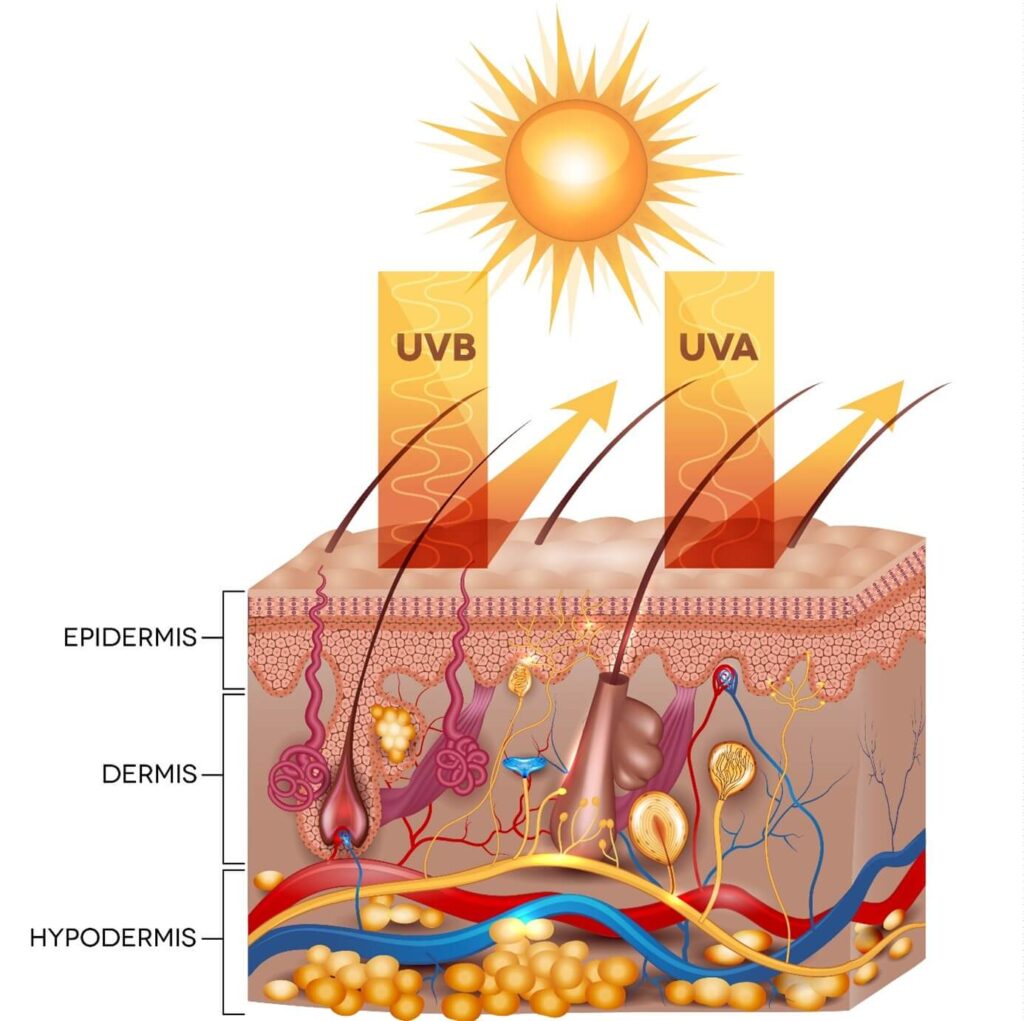
Uwemba-Pastilles® Sun & Skin Protection support this effect.
Polypodium Leucotomos extracts have been used to treat psoriasis in South America and Spain. Increasing clinical-scientific evidence suggests that P. leucotomos can also be used to treat various skin diseases and conditions because it provides protection from ultraviolet radiation by preventing polymorphic light eruption.
Beta-carotene assists with skin problems that may be caused by photosensitivity.
Light sensitivity and sun protection factor
The sun protection factor (SPF) is a value for how much longer you can stay in the sun with an applied sunscreen without getting sunburned.
Self-protection time is the amount of time you can stay in the sun without a sunscreen product without your skin reddening or burning. Self-protection time depends on skin type and ranges from three minutes to one and a half hours. The possible time in the sun can be determined by a simple formula.
Self-protection time x sun protection factor = maximum possible time in the sun without sunburn.
With a self-protection time of 5 minutes and a sun protection factor of 5, you could (5 min. x SPF 5) stay in the sun for about 25 minutes.

| Type I | Type II | Type III | Type IV | Type V | Type VI | |
|---|---|---|---|---|---|---|
| Celtic type | Nordic type | Mixed type | Mediterranean type | Dark skin types | Black skin types | |
| Skin colour | very light | light | medium | brownish, olive | light brown, dark | dark to black |
| Eye colour | light grey, blue, green | grey, blue, green | grey, blue, green, brown | brown to black | black | black |
| Hair colour | light blond to reddish | blond, light to dark brown | blond, dark blond, light to dark brown, black | blond, dark blond, light to dark brown, black | black | black |
| Special features | Freckles | Freckles | hardly any freckles | no freckles | no freckles | no freckles |
| Degree of tan | does not or hardly tan | slow, minimal | slow, progressive | fast (medium brown) | fast (dark brown) | fast (black) |
| Sunburn | very often | often | sometimes | rarely | hardly | never |
| Self-protection time | 5 to 10 minutes | 10 to 20 minutes | 20 to 30 minutes | 30 minutes-40 minutes | 60 minutes | 90 minutes |
| Recommended sun protection factor (SPF) | 40-50+ | 25-40 | 25 (at first), later also lower | 10 to 20 | 6 till 10 | 6 |
Effect of the sun on the skin
Protective reaction of the skin
The skin reacts by building up its own protection. It turns brown and forms the so-called light callus, as described above.
Damage to the eyes
UV rays can cause painful conjunctivitis and corneal inflammation.
Building of vitamin D
UV rays trigger the formation of the body’s own vitamin D. It is produced by UV-B radiation. It is triggered by UV-B radiation.
Weakening of the immune system
Exposure to UV rays can weaken the immune system because it can suppress the immune response.
Damage to the skin
The skin can be damaged by sunburn, sun allergies and phototoxic reactions.
Note
Food supplements are not a substitute for a varied, balanced diet, fresh fruits and vegetables and a healthy lifestyle. Store in a cool, dry place out of the reach of children. Do not exceed recommended dosage.

Ingredients
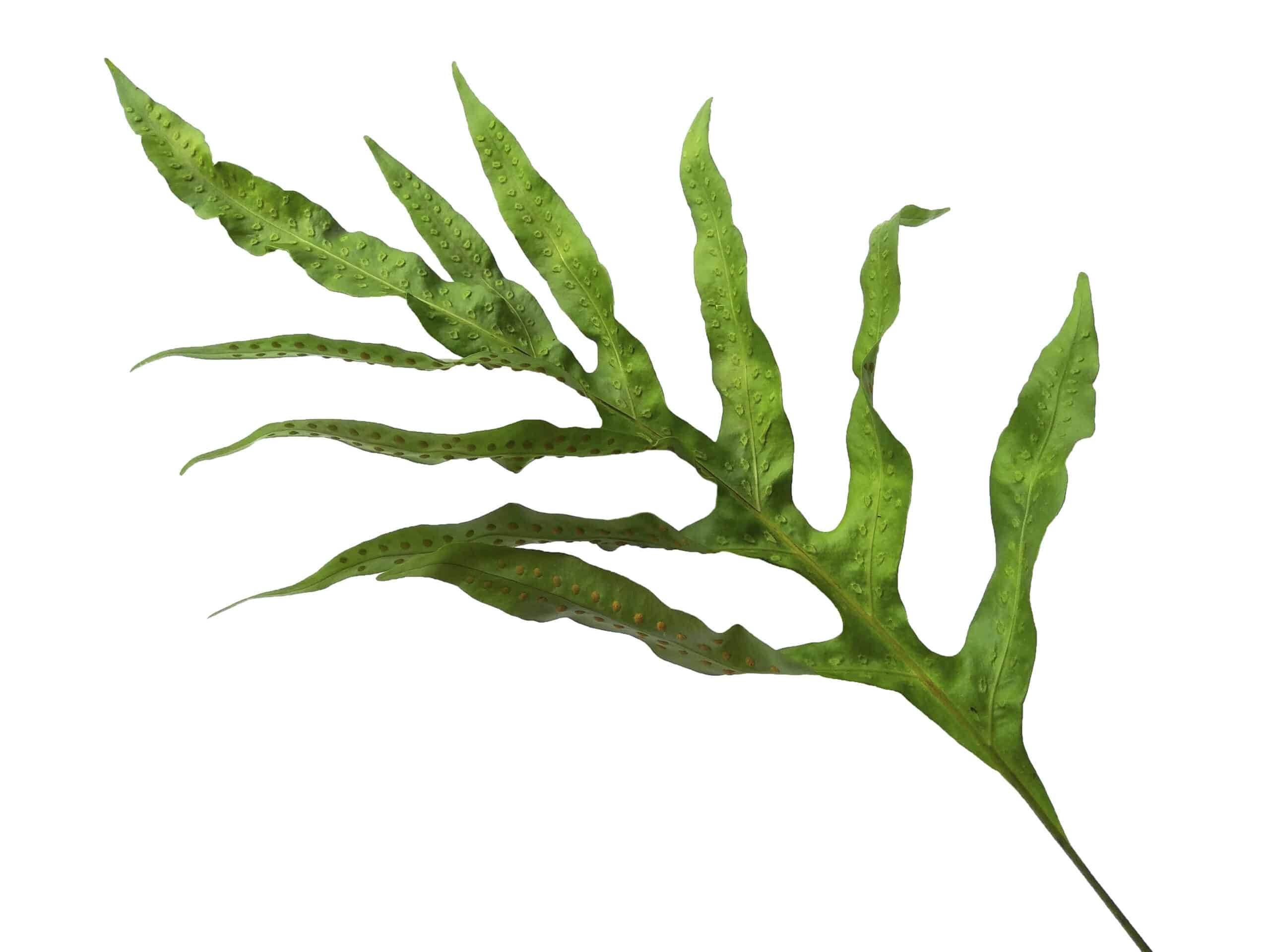
Golden polypody
Polypodium leucotomos
Origin
Polypodium Leucotomos is commonly referred to as Calaguala or Golden polypody. It is usually cultivated in Central America. Extracts from this plant are called anapsos.
Use in folk medicine
Polypodium leucotomos extracts have been used to treat psoriasis in South America and Spain. Increasing clinical-scientific evidence suggests that P. leucotomos can also be used to treat various skin diseases and conditions, including atopic dermatitis, vitiligo and because it provides protection from ultraviolet radiation by preventing polymorphic light eruption.

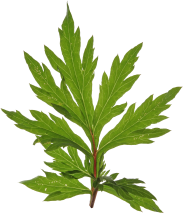
The quality of Uwemba Pastilles®
Manufactured, analyzed and released under GMP guidelines
We vouch for our good manufacturing practices!
That’s why we work according to the guidelines of Good Manufacturing Practice (GMP) – the European standards for quality assurance in the production of pharmaceuticals and food supplements.
Gentle processing of the plants and predominantly organic quality
Each of our plants requires its own climatic conditions, so they are planted all over the world. For example, the mugwort plant Artemisia originates from the Benedictine mission in Tanzania. In cooperation with regional producers, we pay attention to sustainability and organic cultivation.
Our products consist of plant components that complement each other in their benefits. While still in the country of cultivation, the plant partswith high potency are sorted and strictly tested for possible microbiological contamination when they are delivered to Switzerland.
The plants are processed in Switzerland, gently and energy-efficiently ground and pressed into herbal pastilles. Thus, we monitor the entire process of production according to European quality standards and ensure that there are no harmful substances.
Quality from Switzerland – high quality and reliability
Products from Switzerland are known for their quality. This Swiss quality is a commitment for us! We guarantee the highest standards of production and consistently high quality and reliability of our products!
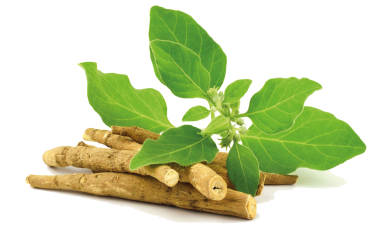
Herbal dietary supplements Uwemba-Pastilles®
What are Uwemba pastilles® ?
Uwemba-Pastilles® are various herbal multi-substance preparations. Currently 3 products are available, which are suitable for different indications.




